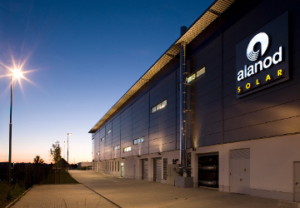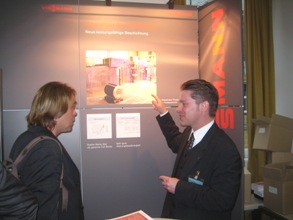Germany: Merger between Alanod and Almeco Fails
September 2, 2014
 Rarely has a press release by German coating specialist Alanod been this short: The statement to take the solar thermal industry by surprise was only three sentences long. “The shareholders of [Alanod Group and Almeco Group] have agreed to utilise the limited opt-out clause till the end of August. Regarding further details, both companies agreed to observe secrecy. For the future, Alanod and Almeco will be competitors again and are respecting each other, in order to continue supplying their customers as a reliable partner on a long-term basis,” it said on 14 August 2014. And rarely has the solar thermal industry had so little knowledge about why a merger failed. Alanod-Almeco, with headquarters in Ennepetal, had just been announced three months ago in June, right before the Intersolar Europe conference began.
Rarely has a press release by German coating specialist Alanod been this short: The statement to take the solar thermal industry by surprise was only three sentences long. “The shareholders of [Alanod Group and Almeco Group] have agreed to utilise the limited opt-out clause till the end of August. Regarding further details, both companies agreed to observe secrecy. For the future, Alanod and Almeco will be competitors again and are respecting each other, in order to continue supplying their customers as a reliable partner on a long-term basis,” it said on 14 August 2014. And rarely has the solar thermal industry had so little knowledge about why a merger failed. Alanod-Almeco, with headquarters in Ennepetal, had just been announced three months ago in June, right before the Intersolar Europe conference began.Not only has the management of both groups been offering very few details on the merger’s failure. But the clients, the collector manufacturers themselves, have not had any reliable information about its collapse – rather surprising for a small and familiar segment such as the German solar collector industry. After talks with several industry representatives, one possible version of the story behind the failure seems to emerge.
Merger just strengthened the former small competitors
Multi-source strategies are an important tool for larger collector producers. Because of the merger, several collector manufacturers might have started negotiations and even signed new contracts with smaller coating manufacturers in order to avoid being entirely dependent on a market-dominating supplier such as Alanod-Almeco. Almeco as the junior partner within the newly created group might have suspected sales to drop, as some clients seemed to have had plans to replace Almeco´s absorber plates by plates from a third supplier. This would have been an especially daunting prospect because Almeco benefited from his runner-up position after Alanod purchased Bluetec, formerly number two on the European coating market, at the beginning of March 2014. Therefore, it was most probably Almeco which hit the brakes and quickly tried to exit the contract. Both partners might have understood that the merger just strengthened the former small competitors.
This version of the story has not been officially confirmed, and there are some other factors which might have also played a role in the decision, but which have not been taken into account yet. First, the merger was between two family-owned businesses. It meant that experienced businesspeople, who were strongly invested in what they had built up, had to agree on a common sales and marketing strategy, something which might not have been that easy to accomplish overall.
A Supplier with more than 70 % market share weaken the competitiveness of an industry
Second, there was the lighting industry. Reflective aluminium sheets for lighting systems make up a much higher share of both merger partners’ turnover than absorber sheets for solar collectors. Over several decades, the lighting industry had been very much used to dealing with two major suppliers, Almeco and Alanod. “The lighting industry had more difficulties accepting the merger of their two dominating suppliers than the solar thermal industry, which had been faced with many different supply situations over the last years,” a senior salesperson in the Alanod Group confirmed. Most probably, the lighting industry had been even more surprised by the merger and was understandably shocked by it.
The collector industry is certainly relieved by the current development: A company supplying key components while claiming a market share of more than 70 % would always weaken the competitiveness of an industry.
More information:
Almeco: http://www.almecogroup.com/en
Alanod Group: http://www.alanod-solar.com


